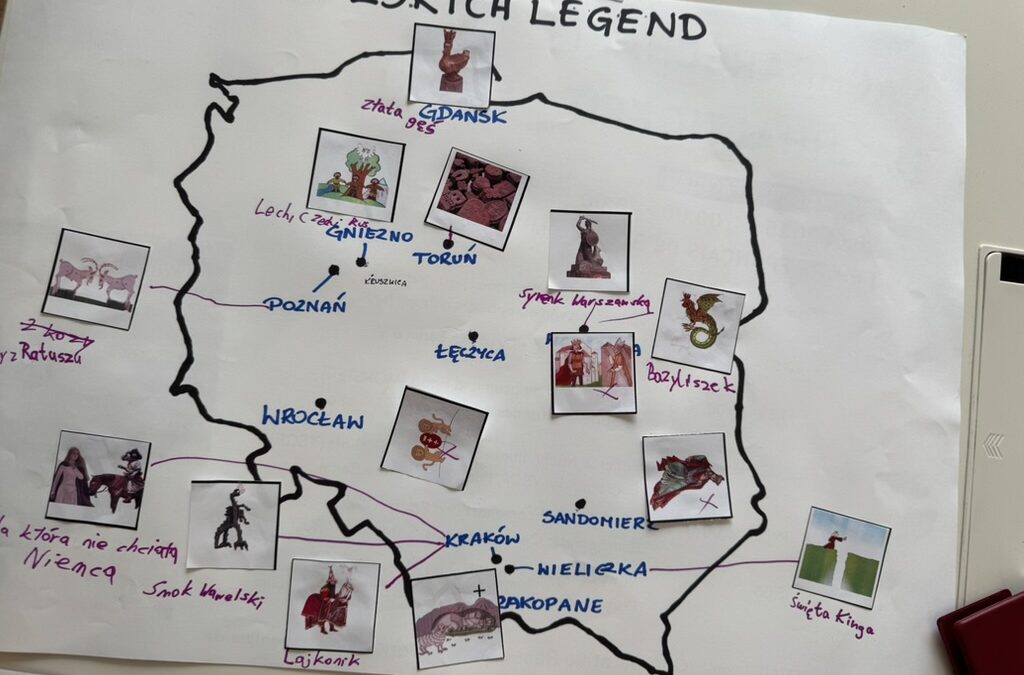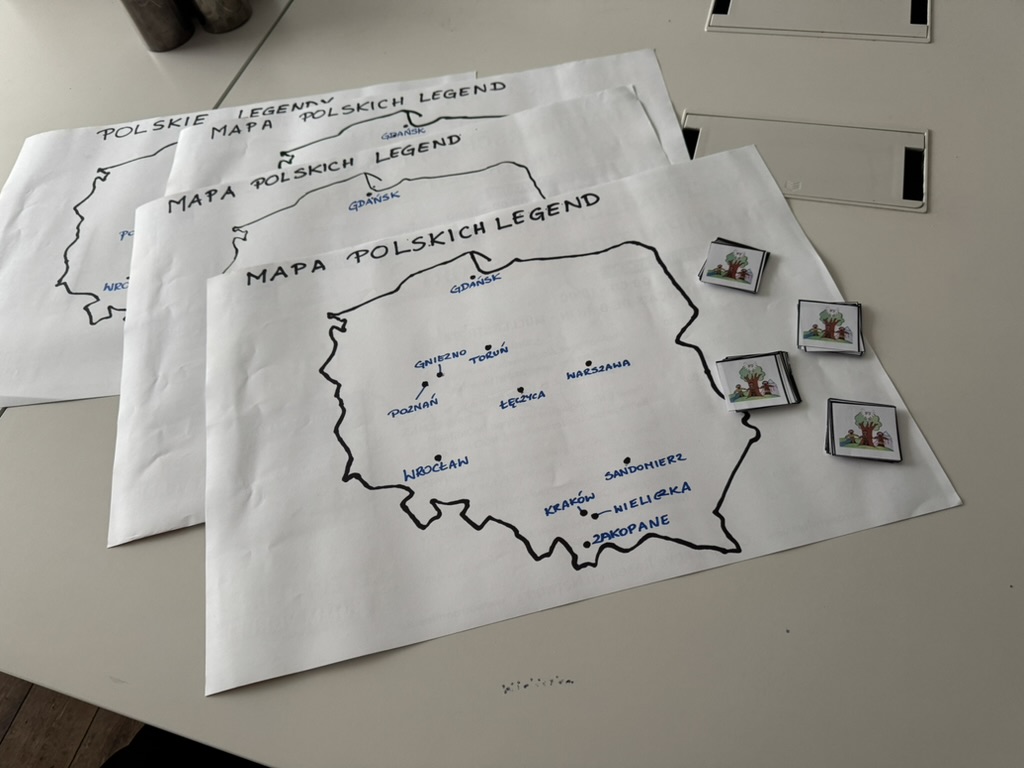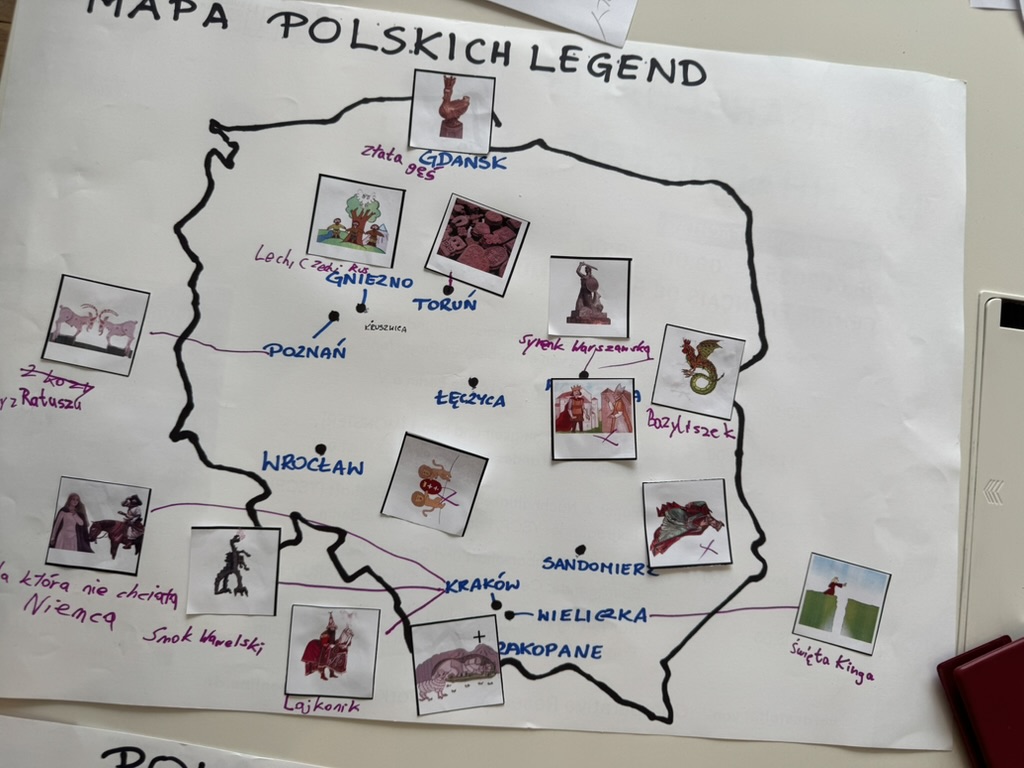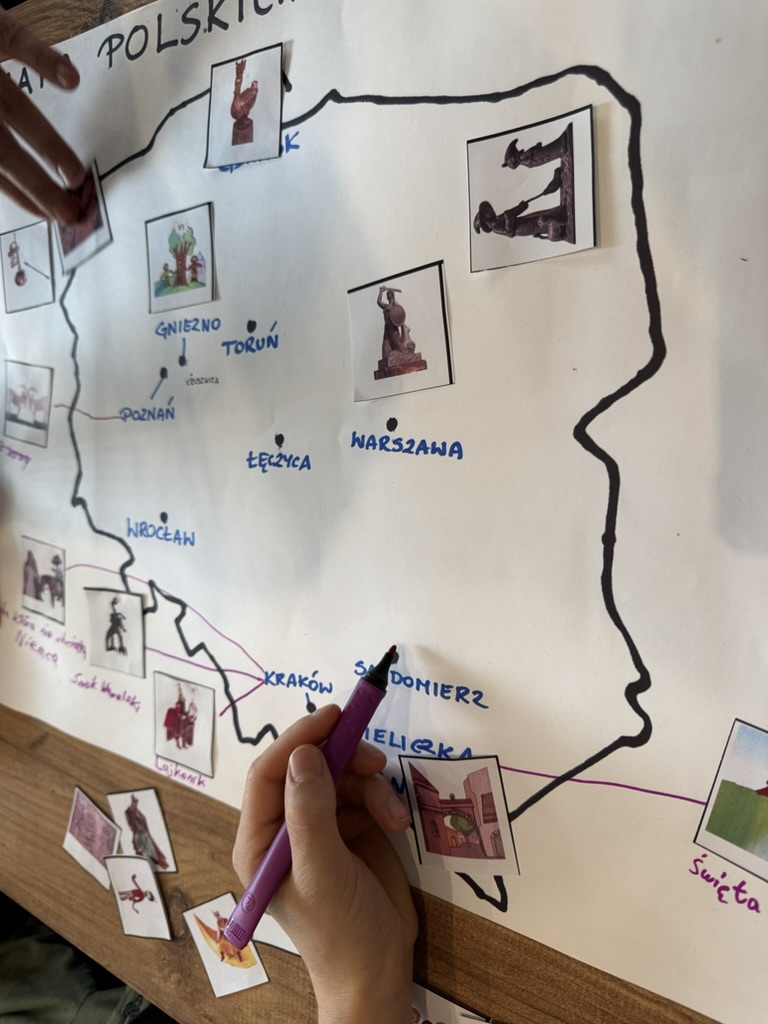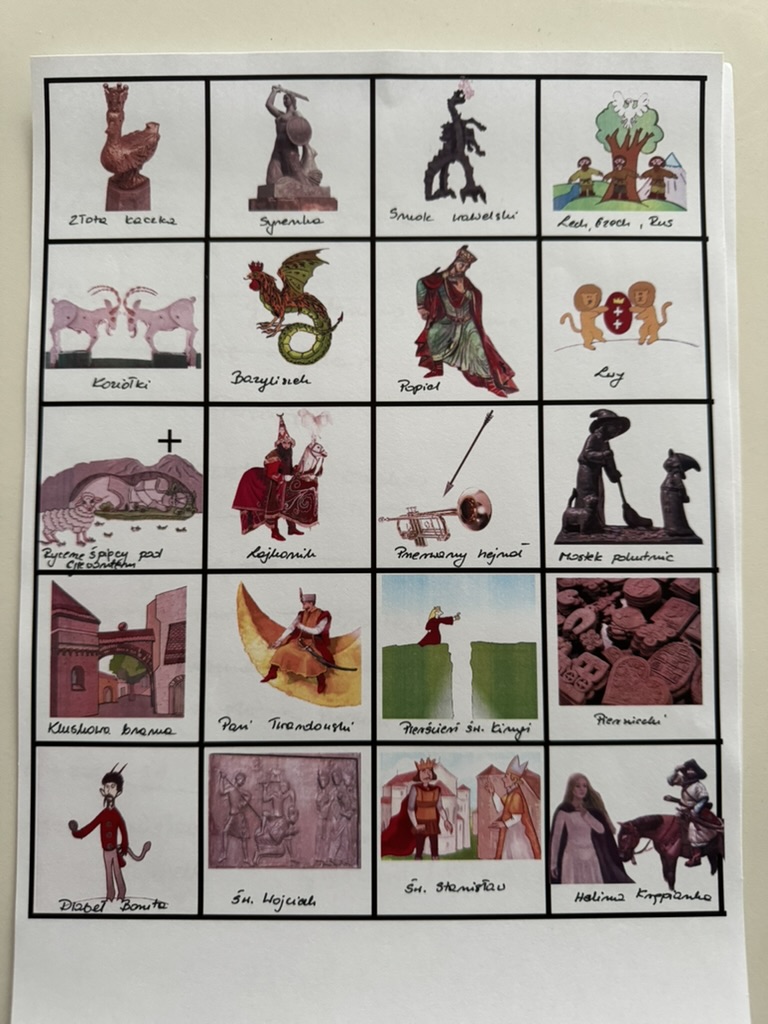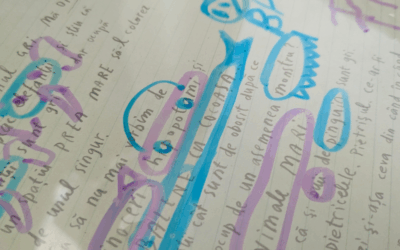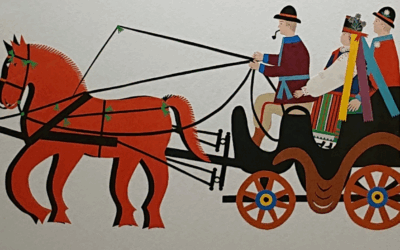Mapping Poland’s Legends
Mapping Poland’s Legends
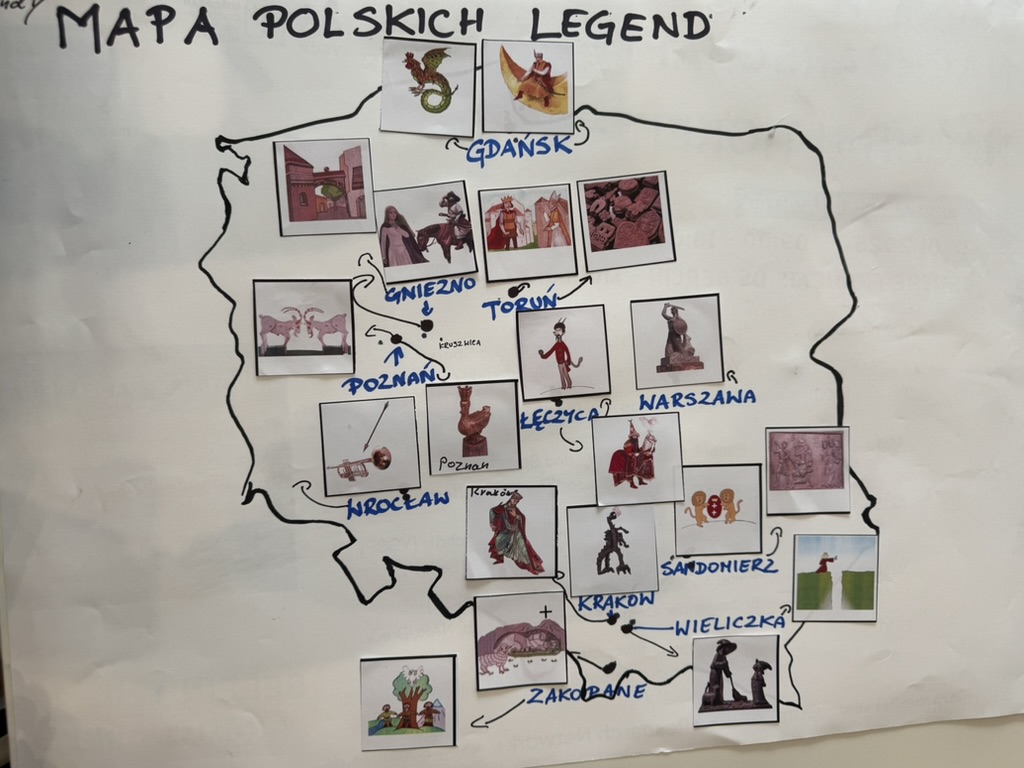
Resources available for:
Adaptable to:
Provide each group with a blank or semi-marked map of Poland. Prepare small illustrated cards with symbols representing key Polish legends (e.g. a dragon for Kraków, goats for Poznań etc).
2. Explain the Task
– Find the correct city associated with the legend and place the card in that location.
– As the hints can be given, legend titles, or short descriptions to aid recognition.
3. Start the game
– Give each group a stack of legend symbol cards.
– Optionally provide blank legend title cards where students can write the name of the legend.
4. Scoring
– After placing all cards, go through the correct answers as a group.
– Groups receive points for each correct city-symbol match, and bonus points for correctly naming the legend.
5. Discussion
– Ask children to reflect on the legends they learned, which were most interesting.
– What new cities or cultural facts they discovered
This game enhances cultural and geographical knowledge about the home country.

For Educators & Teachers
Recommendations for educators and teachers
- For Younger Children (6–9 years)
– Use fewer legends and mark cities clearly.
– Focus on matching symbols to cities with visual support.
- For Older Children or Teens
– Remove city names from the map for added challenge.
– Ask for additional information such as moral of the story or characters.
- Multilingual Contexts
– Allow children to share legend names from the country of living.
- Incorporate a Discussion Phase
– Use interactive virtual whiteboards (e.g. Miro) and digital maps.
– Cards can be drag-and-drop elements and legends discussed in breakout rooms.
Expected output
-
It supports learning about Poland in a fun and playful way.
-
Children improve their memory and thinking skills by matching pictures with places.
-
They learn to listen, speak, and share ideas with others during group work.
-
The activity encourages curiosity about stories, cities, and culture.
-
It builds teamwork and helps children feel proud of what they know and discover.
Adaptation/Application of the method
1. For a Group with Varied Language Proficiency
– Pair or Group Work – Group students by similar language levels or mix levels to encourage peer support and collaboration.
– Different Difficulty Levels – Provide simplified maps with marked cities for beginners, while more advanced groups work with unmarked maps or receive additional tasks such as describing the legend.
– Extended Tasks for Advanced Learners – Ask advanced students to write short descriptions of the legend or share its moral.
2. For Other Languages
– Translated Instructions – Provide game rules and legend summaries in multiple languages to support heritage or community language use
3. For Bilingual/Multilingual Options
– Cultural Exchange – Ask children to share a similar legend from their own culture and locate it on the same or separate map.
Developed by / Origin / Original language
References, and Resources
Images from our testing workshop: © Katarzyna Włusek (Comparative Research Network e. V.)
YouTube LEGENDY POLSKIE by Allegro: https://www.youtube.com/playlist?list=PLFttT4XjEwKQjYyH9m2vwwXQG94tUEeR1
Polish Legends Erasmus: https://www.1lo.gorzow.pl/wp-content/uploads/2022/12/Polish-legends-Erasmus.pptx.pdf
Poland Travel – Polish Legends: https://www.polandtraveltours.com/en/bez-kategorii-2/polish-legends/
Culture.pl Resourse: https://culture.pl/en/tag/polish-legends
Similar Activities
Word Search with Transparent Sheet
This playful reading activity helps children explore a story by finding, highlighting, and creatively rewriting key words. Through colors and shapes, they build simple or advanced sentences, making language learning fun and interactive.
Fold, Snip, Paste! – The Art of Polish Paper Cuts
Paper cuts are a long-standing tradition of Polish peasant culture. The best-known, from Kurpie and Łowicz, were cut with sheep shears. They range from simple to intricate designs, from single-colour cuts to collages and illustrated stories and have been used to decorate walls and windows. This makes them a perfect means to combine a creative activity with heritage language learning.

